
'I fell headlong into it': Nina Jacobson was desperate to get The Hunger Games into cinemas
'The Hunger Games' producer Nina Jacobson has admitted that she "couldn't bear the thought" of another person bringing the dystopian franchise to life on the big screen.
2023-11-18 18:29

Why Apple is working hard to break into its own iPhones
Last summer, Apple’s iPhones got a new feature that it hopes you never need to use and which mostly makes them harder to use. Named Lockdown Mode, Apple stresses that it is not for everyone, calling it an “optional, extreme protection” aimed at “very few individuals” that will be irrelevant to most people. Many people will never know that the feature exists. But it is just one part of a range of features that Apple and other companies have been forced to add to their devices as phones and other personal devices become an increasingly important part of geopolitics. Lockdown Mode is just one part of Apple’s response: it sits alongside other security features as well as detailed security work that aims to stop people breaking into its devices. That work has largely been done quietly, with Apple focusing much more on its privacy work than on security. But recently it opened up on some of that work, as well as the thinking that led Apple to put so much focus onto a set of features that nobody ever wants to use. Some of that work is happening now in Paris. The city has a long history of work on security technology – including work on smart cards that saw the early widespread introduction of secure debit cards in France – but the activity at Apple’s facilities in the city is looking far ahead, towards iPhones and other devices that are secret for now and will not appear for years. As part of that work in Paris, Apple’s engineers are working hard to break its phones. Using a vast array of technology including lasers are finely tuned sensors, they are trying to find gaps in their security and patch them up before they even arrive in the world. Unlike with software, where even significant security holes can be fixed relatively simply with a security update, hardware is out of Apple’s hands once a customer buys it. That means that it must be tested years in advance with every possible weakness probed and fixed up before the chip even makes it anywhere near production. Apple’s chips have to be relied upon to encrypt secure data so that it cannot be read by anyone else, for instance; pictures need to be scrambled before they are sent up to be backed up on iCloud, for instance, to ensure that an attacker could not grab them as they are transferred. That requires using detailed and complicated mathematical work to make the pictures meaningless without the encryption key that will unlock them. There are various ways that process might be broken, however. The actual chip doing the encryption can show signs of what it is doing: while processors might seem like abstract electronics, they throw out all sorts of heats and signals that could be useful to an attacker. If you asked someone to keep a secret number in their head and let you try and guess it, for instance, you might tell them to multiply the number by two and see how long it takes and how hard they are thinking; if it’s a long time, it suggests the number might be especially big. the same principle is true of a chip, it’s just that the signs are a little different. And so Apple gets those chips and probes them, blasts them with precisely targeted lasers, heats them up and cools them down, and much more besides. The engineers in its Paris facilities doing this work are perhaps the most highly capable and well resourced hackers of Apple’s products in the world; they just happen to be doing it to stop everyone else doing the same. If they find something, that information will be distributed to colleagues who will then work to patch it up. Then the cycle starts all over again. It is complicated and expensive work. But they are up against highly compensated hackers: in recent years, there has grown up to be an advanced set of companies offering cyber weapons to the highest bidder, primarily for use against people working to better the world: human rights activists, journalists, diplomats. No piece of software better exemplifies the vast resources that are spent in this shadow industry than Pegasus, a highly targeted piece of spyware that is used to hack phones and surveil their users, though it has a host of competitors. Pegasus has been around since at least 2016, and since then Apple has been involved in a long and complicated game of trying to shut down to the holes it might exploit before attackers find and market another one. Just as with other technology companies, Apple works to secure devices against more traditional attacks, such as stolen passwords and false websites. But Pegasus is an entirely different kind of threat, targeted at specific people and so expensive that it would only be used in high-grade attacks. Fighting it means matching its complexity. It’s from that kind of threat that Lockdown Mode was born, though Apple does not explicitly name Pegasus in its materials. It works by switching off parts of the system, which means that users are explicitly warned when switching it on that they should only do so with good reason, since it severely restricts the way the phone works; FaceTime calls from strangers will be blocked, for instance, and so will most message attachments. But Lockdown Mode is not alone. Recent years have seen Apple increase the rewards in its bug bounty programme, through which it pays security researchers for finding bugs in its software, after it faced sustained criticism over its relatively small payouts. And work on hardware technologies such as encryption – and testing it in facilities such as those in Paris – mean that Apple is attempting to build a phone that is safe from attacks in both hardware and software. Apple says that work is succeeding, believing it is years ahead of its hackers and proud of the fact that it has held off attacks without forcing its users to work harder to secure their devices or compromising on features. But recent years have also seen it locked in an escalating battle: Lockdown Mode might have been a breakthrough of which it is proud, but it was only needed because of an unfortunate campaign to break into people’s phones. Ivan Krstić, Apple’s head of security engineering and architecture, says that is partly just a consequence of the increasing proliferation of technology. “I think what’s happening is that that there are more and more avenues of attack. And that’s partly a function of wider and wider deployment of technology. More and more technology is being used in more and more scenarios.,” says Krstić, pointing not only to personal devices such as phones but also to industry and critical infrastructure. “That is creating more opportunity for more attackers to come forward to develop some expertise to pick a niche that they want to spend their time attacking. “There was a time that that I still well remember when data breaches were seemingly not a wide problem. But of course, they have exploded over the last 10 years or so – more than tripled, between 2013 and 2021. In 2021, the number of personal records breached 1.1 billion personal records. “During the same amount of time a number of other attackers have been pursuing new kinds of attack, or different kinds of attacks – against devices, against Internet of Things devices, against really anything that is that is connected in in some way to the internet. “And I think in a lot of these cases, attackers were will go where there is money to be made or some other benefits to be obtained and the nature of the fight for security is to keep pushing the defences forward to keep trying to stay one step ahead of not just where the attacks are today, but also where they’re going.” Apple doesn’t reveal exactly how much of its money is spent on security work. But it must be significant, both in terms of raw money as well as the extra thought and design required on any given device. What’s the justification for investing so many resources on ensuring that a very small number of people are protected from the most advanced attacks? “There are two,” says Krstić. “One is that attacks that are the most sophisticated attacks today may over time start to percolate down and become more widely available. Being able to understand what the absolute most sophisticated most grave threats look like today lets us build defences before any of that has a chance to percolate down and become more widely available. But I think that’s the smaller of the two reasons. “When we look at how some of this state grade mercenary spyware is being abused, the kinds of people being hit with it – it’s journalists, diplomats, people fighting to make the world a better place. And we think it’s wrong for this kind of spyware to be abused in this way. We think that that those users deserve trustworthy, safe technology, and the ability to communicate safely and freely, just as all our other users. “So this was, for us, not a business decision. It was… doing what’s right.” Apple’s focus on security places it into a difficult geopolitical situation of the kind it has often studiously avoided. Late last month, for instance, Indian opposition leaders started receiving threat notifications warning them that their devices might be attacked. Neither the notifications or Apple more generally named who was doing it, and Apple says that the warnings could be a false alarm – but nonetheless the Indian government pushed back, launching a probe of the security of Apple’s devices. It is not the kind of difficulty that comes even with other security work; those stealing passwords or scamming people out of money don’t have lobbyists and government power. The kind of highly targeted, advanced attacks that Lockdown Mode and other features guard against however are costly and complicated, meaning they will often be done by governments that could cause difficulties for Apple and other technology companies. How is Apple guided in situations where it could potentially be up against governments and other powerful agencies? “We do not see ourselves as set against governments,” says Krstić. “That is not what any of this work is about. But we do see ourselves as having a duty to defend our users from threats, whether common or in some cases, truly grave. He declines to give precise details about how the company has dealt with those difficulties in the past. “But I think when you look at what’s been driving it, when you look at these cases that I’ve pointed to and when you look at what the response has been to the defences we built and how we’ve been able to protect some of these users, we feel very strongly like we’re doing the right thing.” Threat notifications are not the only part of Apple’s security work that have caused issues with authorities. Another much larger debate is coming, and might potentially bring a much more substantial change. The European Union’s recently signed Digital Markets Act requires that what it calls gatekeepers – Apple and other operators of app stores – must allow for sideloading, or letting people put apps on their phones from outside of those App Stores. At the moment, iPhones can only download and run apps downloaded from the official store; Apple says that is an important protection, but critics argue that it gives it too much power over the device. The introduction of sideloading is just one of the many controversial parts of the Digital Markets Act. But if it goes through as planned, the company will be forced to let people head to a website and download a third-party app, without standing in the way. The European Commission has made very clear that it believes that is required for fair competition, and that it thinks that will give users more choice about what apps they use and how they get them. Krstić does not agree, and Apple has been explicit in its opposition to sideloading. The idea that people are being given an extra choice – including the choice of sticking with the App Store and keeping its protections – is a false one, he says with some frustration. “That’s a great misunderstanding – and one we have tried to explain over and over. The reality of what the alternative distribution requirements enable is that software that users in Europe need to use – sometimes business software, other times personal software, social software, things that they want to use – may only be available outside of the store, alternatively distributed. “In that case, those users don’t have a choice to get that software from a distribution mechanism that they trust. And so, in fact, it is simply not the case that users will retain the choice they have today to get all of their software from the App Store.” Read More Disney, Apple suspend ads on Musk’s X after he agrees with antisemitic tweet Apple to adopt system to improve texting between iPhones and Android devices Users of iPhones can now check bank balance from Wallet app TikTok launches feature to save songs to music apps like Spotify Apple answers one of the big mysteries about the iPhone – for now You can finally use one feature of the Apple Vision Pro headset – sort of
2023-11-18 18:27
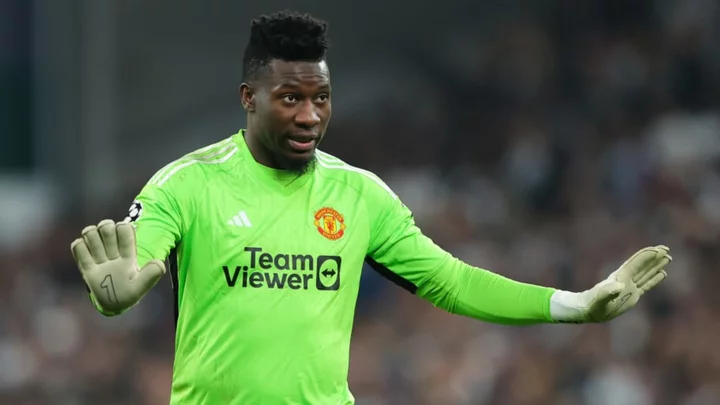
Man Utd sweating over Andre Onana fitness as goalkeeper limps off with muscle injury
Man Utd goalkeeper Andre Onana limped off with a muscle injury in Cameroon's 3-0 win over Mauritius.
2023-11-18 18:21

Wirral family distraught as mother trapped in Gaza
Islam Alashi, 37, left her home in Wirral for Gaza to visit her sick father in September.
2023-11-18 17:54
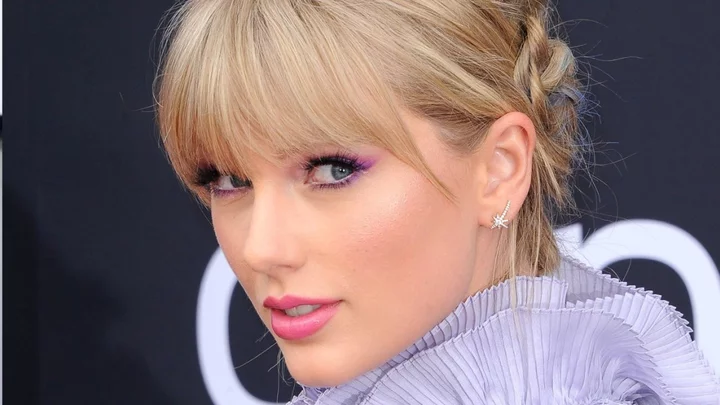
Taylor Swift fan dies at Brazil concert drawing widespread criticism of the venue
A Taylor Swift fan tragically passed away before the pop star's concert in Brazil last night due to the heat in the venue. 23-year-old Ana Benevides passed away before the concert, believed to be caused by dehydration and heat exhaustion - although this has not been confirmed. Swift put a statement on her Instagram story about the loss. "I can't believe I'm writing these words but it is with a shattered heart that I say we lost a fan earlier tonight before my show. I can't even tell you how devastated I am by this. There's very little information I have other than the fact that she was so incredibly beautiful and far too young," Swift wrote. "I'm not going to be able to speak about this from stage because I feel overwhelmed by grief when I even try to talk about it. I want to say now I feel this loss deeply and my broken heart goes out to her family and friends. This is the last thing I ever thought would happen when we decided to bring this tour to Brazil." Attendees of the concert revealed that they were not allowed to bring water bottles inside and the venue did little to provide water and other safety measures once people had entered the venue. Fan Monica Bertha shared a video she had taken at the concert where Swift is seen checking on fans to make sure they're receiving water. "It's very hot so if somebody says they need water when it's this hot they really need it," Swift can be seen saying to the crowd. @mobertha Queen Tay stopping the concert to make sure fans get water? #taylorswift #erastour #riodejaneiro #rioerastour Another clip has also gone viral showing Swift herself picking up water bottles mid-performance and throwing them into the crowd. The venue - Estádio Olímpico Nilton Santos - is facing calls to allow fans to bring in water to stop something like this ever happening again. Indy100 have reached out to Estádio Olímpico Nilton Santos for comment. Sign up to our free Indy100 weekly newsletter Have your say in our news democracy. Click the upvote icon at the top of the page to help raise this article through the indy100 rankings. How to join the indy100's free WhatsApp channel
2023-11-18 17:28
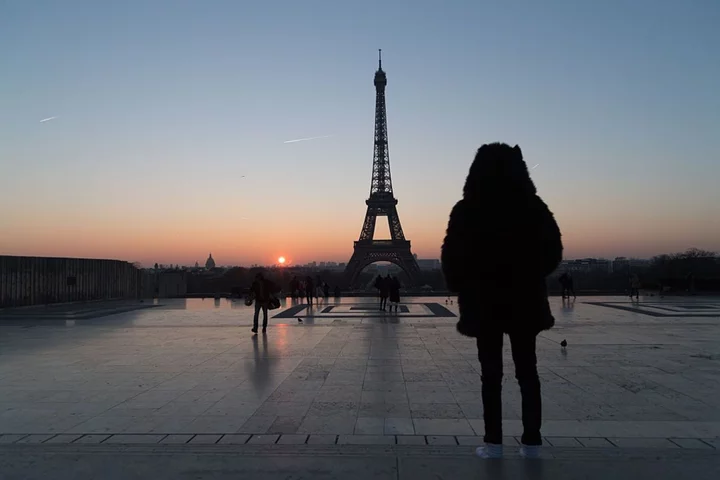
Rich Americans Cancel Trips to Paris Following Middle East War
Wealthy Americans are holding off on booking trips to Paris as the war in the Middle East and
2023-11-18 16:57
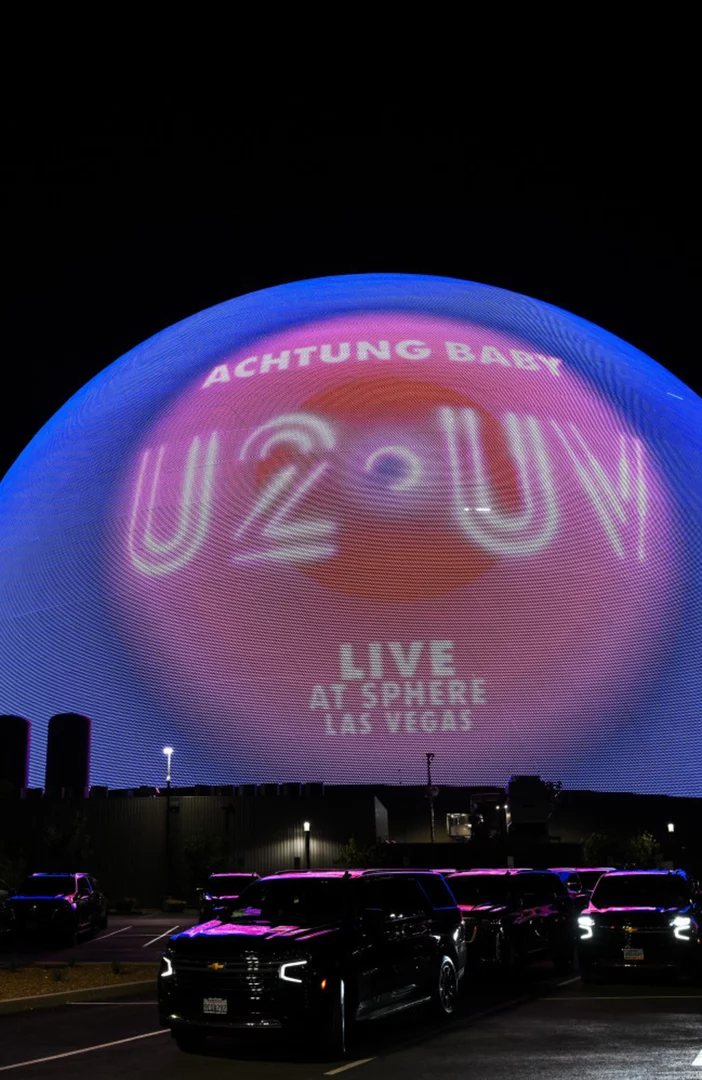
'You do need to drive the system a little hard': U2's Sphere Las Vegas show wasn't rock 'n' roll enough
U2 have had to tweak how they play at their Las Vegas residency show.
2023-11-18 16:17

Mullets are officially back. And, no, we haven’t lost our minds
Everywhere I go, I am being stalked by mullets. Walk into a pub in the vicinity of Hackney, east London, and you, like me, will be haunted by the sight of them. Queue for a Fred Again concert and you’ll see an ocean of the things. Go to a rugby match at Twickenham Stadium, and there will be as many mullets as there are team shirts. Whether you know it as the mullet or the “Kentucky waterfall” or “beaver paddle”, they’ll have been in your sightline as of late. The hairstyle, which involves a shorter crop at the front, top and sides, and longer in the back, is currently being paraded by on-screen heartthrobs like Paul Mescal, Australian actor Jacob Elordi and American movie star Timothée Chalamet. In the world of sport, Spanish footballer Hector Bellerin, British rugby player Joe Marler and Formula One driver Valtteri Bottas have all rocked the hairstyle this year (and that’s not forgetting about 90 per cent of “Aussie rules” football players have mullets right now too). But its ubiquity in modern pop culture goes back a few years. Singer Lil Nas X, for example, turned up at the MTV Awards in 2021 wearing a curly, layered version of the hairstyle. Women have been wearing the coiffure even longer. Pop culture mainstays like Rihanna and Zendaya have both worn mullets on the red carpet, in 2013 and 2016, respectively. By 2021, Miley Cyrus was donning the style. That same year, Vogue hailed the mullet as the unlikely star of modern street style. The mullet has also stormed down fashion week runways, with Junya Watanabe, Stella McCartney and Alexander McQueen all incorporating the hairstyle into their 2022 shows. If that wasn’t enough proof of the mullet going mainstream, a failsafe method for judging something’s popularity is when that trendy thing gets banned in schools, or there’s a level of moral panic about it. That happened last month when a Sunderland schoolboy’s mullet was decided to be so “extreme” that he was put in isolation and ordered to chop it off. Meanwhile, even more Brits are trying to catch up with Australian mullet culture: a doctor from Dorset made headlines this week as he has been growing his locks in preparation for the world mullet growing championships in Australia, a contest that he said was “widely considered to be the Everest of the competitive mullet growing world”. We’ve all gone mullet mad. Though the name itself wasn’t coined until two decades ago – the Oxford English Dictionary credits the Beastie Boys’ 1994 song “Mullet Head” for the popularisation of the word – the mullet existed long before that. In his book Mullet Madness, Alan Henderson writes that prehistoric people may have figured out that having their hair cut shorter at the front and longer at the back meant they could keep their hair out of their eyes and their necks still toasty. What’s more, Ancient Greek texts referenced men with mullet-style cuts, while depictions of Greek gods that date back to the 6th century suggest that the hairstyle existed even then. In certain indigenous populations in the US, long hair symbolises power and a connection with the divine, and a version of the mullet – the front spiked and the back long – is considered a traditional style in tribes of the western United States like the Blackfoot and Crow. The version of the mullet we see in popular culture today, though, strongly harks back to David Bowie’s tangerine-orange waterfall-style mullet worn as his alter ego Ziggy Stardust. In the Seventies, it set a cultural precedent for the mullet as a fashion statement. Back then, the hairstyle was subversive. It spurred strong reactions from the more conservatively coiffed elite because it refused to conform to any one standard: the mullet is both long and short; masculine and feminine; somehow, scruffy while slick. The mullet’s return could be seen as a happy accident. In lockdown, men would scissor away at their locks, crafting eccentric hairstyles out of sheer boredom, sharing pictures of the resulting cut to their respective WhatsApp group chats. But that comedy mullet has since died out. A fashionable, en-vogue hairstyle has stuck around. In searching for the perfect modern mullet, men have downed tools and turned to the professionals for help. Ryan Lewis, owner of Club 13 barbershop in Hull, says that about one-third of his customers are opting for mullets. “Its presence within combat and contact sports alone conveys a modern masculinity that has trickled down into the mainstream,” he says, adding that the “harsher cuts” seen in rugby culture are being cancelled out by the more subtle, feathery mullets worn by Mescal et al. “The modern mullet is bringing a more natural and effortless look with a softer and less obnoxious shape.” James Doyle, the manager of Bristol barbershop Harry Blades and Angry Daves, says it’s not just people who work in non-corporate environments who are taking the plunge, either: it’s becoming workplace-appropriate. “You would think it’s only the musicians or creatives,” he says. “But I’ve got a couple of accountants that are rocking mullets. Anyone and everyone seems to be jumping on the trend.” The mullet trend allows men to be more expressive and embrace their individuality. I had a sixth form student come in the other day and ask for a mullet – young men are becoming more daring with their hair Samantha Perkins, salon owner and lecturer The style has become so sought after that hairdressing schools are changing the way they train stylists, too. Samantha Perkins is the owner of the salon Hair by Sam and lectures at the London Hairdressing Academy, and says that the academy has launched special masterclasses in the art of cutting mullets due to popular demand. “It’s very technical,” she explains. “It’s cut with scissors and razors, so without using clippers – so it’s already a level three cut without a doubt. Students really need to understand the hair type to execute the look.” Perkins adds that the supremacy of the cookie-cutter “short back and sides” haircut that has dominated men’s hairdressing trends for the past decade is on its way out. “The mullet trend allows men to be more expressive and embrace their individuality,” she says. “I had a sixth form student come in the other day and ask for a mullet – young men are becoming more daring with their hair.” Michael Kent, a stylist at Blue Tit hair salon in London, agrees that the popularity of the mullet hairstyle has opened up a new way of self-expression for men. “Men’s hair has always been so bland and [the mullet] has allowed people to really embrace their individuality. In popular culture, a lot of people are more comfortable in their sexuality and diversifying so much. We’re seeing a lot of clients coming in and asking for a cut like Timothée Chalamet’s. Before, people would ask for Ed Sheeran’s hair, so you can see how it’s changing.” The mullet is not just limited to men, either. The coif has long been donned by famous women (Scarlett Johansson, Joan Jett and Dolly Parton have all worn variations of the style over the years), and both Perkins and Kent say they have women customers asking for the same. “The mullet is a genderless cut,” says Kent. “Women and men are really embracing it – it’s an androgynous look.” And if you want to try the mullet yourself, Kent assures me it suits most people: “It’s like a wig you can put on anyone!” Read More Women’s scarves and crocheted ties - what is Robert Peston wearing now? I salute Dolly Parton’s beauty routine – no one sees me without my make-up How Naomi Campbell proved all her haters wrong – including me Women’s scarves and crocheted ties - what is Robert Peston wearing now? I salute Dolly Parton’s beauty routine – no one sees me without my make-up How Naomi Campbell proved all her haters wrong – including me
2023-11-18 14:49
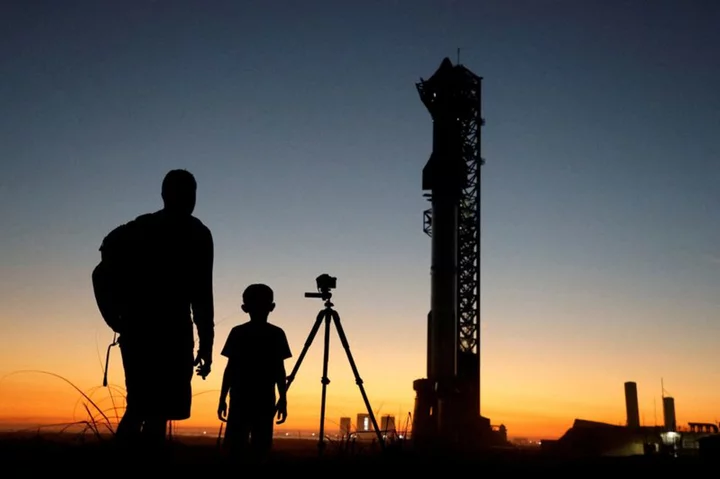
SpaceX Starship set for repeat test flight, seven months after last one blew up
By Joe Skipper, Joey Roulette and Steve Gorman BOCA CHICA, Texas SpaceX's next-generation spacecraft Starship, developed to carry
2023-11-18 14:24

Rwanda flights: Could next step harm Good Friday Agreement?
The European Convention on Human Rights is tied to the 1998 agreement, as BBC News NI explains.
2023-11-18 14:23

China vows to support property sector, tackle local debt
BEIJING China's central bank and financial regulators pledged on Friday to ensure financing support for the property sector
2023-11-18 13:52

Chinese Copper Smelter Agrees to First Drop in Fees in 3 Years
Chilean miner Antofagasta Plc and Chinese smelter Jinchuan Group agreed to copper-concentrate supply contracts for 2024 that set
2023-11-18 13:22
